Today, in the era of digital photography, pictures appear and disappear in a dynamic dance of desire and deception. It is increasingly challenging to create surprising representations of reality, let alone ones worth remembering. Yet, there are still images out there that contain a certain dose of mystery and which do not leave us indifferent. Marcin Ryczek’s photos belong to this rare, endangered species – maybe because they reach to our subconsciousness through their formal simplicity or maybe just because they show us the very pictorial side of things and events we often perceive as ordinary.
Photography implies the recognition of a rhythm in the world of real things. What the eye does is to find and focus on the particular subject within the mass of reality; what the camera does is simply to register upon film the decision made by the eye.
– Henri Cartier-Bresson
In his photographs, Marcin Ryczek uses the language of geometry and minimalism merging it with a slightly painterly approach to the figuration. His images demonstrate the artist’s exceptional intuition, balancing between the artistic and documentary approach to the medium. On the one hand, they are an effect of elaborate composing, but on the other, they often accidentally become what they are – a little bit of chance and a huge amount of patience stand behind every finished composition.
Another important feature that puts Ryczek in the galaxy of those who pave their life paths with good fortune, is that he owes his career to the powerful potential of social media. Three years ago, his photo A Man Feeding Swans in the Snow became a viral hit shortly after he published it on his Facebook profile. Later on, it was named one of the most striking photography of the year 2013 by Huffington Post and received the first prize in the Grand Prix de Découverte: International Fine-Art Photography Award 2013. Supposedly, the fact that he began his artistic career thanks to the supporting power of the Internet, made him decide to exhibit his art in a virtual setting of the Limited Edition Gallery.
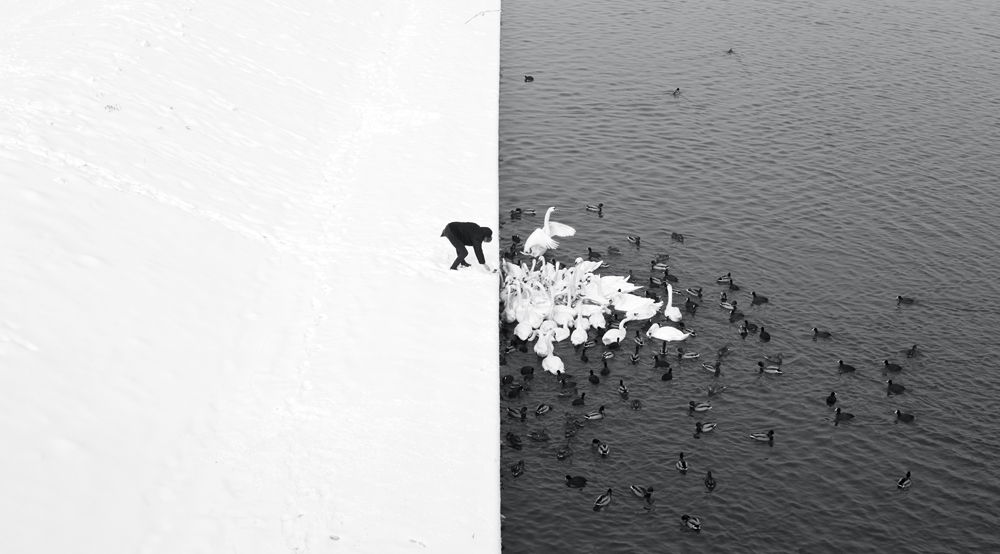
Marcin Ryczek, A Man Feeding Swans in the Snow, © Marcin Ryczek
The best part of his 22 most well-known images are on view now on the gallery’s website – with detailed captions, an accompanying essay by Zuza Krajewska and an interview with the artist. The exhibition’s title is The Moment; as each photo displayed on the white walls of the gallery’s website represents the philosophy of a decisive moment, a concept coined by Henri Cartier-Bresson in his book Images à la sauvette from 1952 – a collection of 126 images and support of the statement. Cartier-Bresson’s photography was the perfect incarnation of this particular method of looking and capturing fragments of the world. He based it on the words of the 17th-century cleric and memoirist Cardinal de Retz, whose quotation opens the preface to the book: “There is nothing in this world that does not have a decisive moment”.
One could recognize such an idea as anachronist and incongruent with the current proliferation of images and of visual culture in its entirety. However, Ryczek proves that we still strive for simple stories captivated in everyday situations. Perhaps, we still look for something unearthly, spiritual, something that goes beyond the common order of things and the tedious materiality – Ryczek’s symbolic, minimalist photographs seem to fulfil this need. Besides, in more general terms, the theory of the decisive moment illustrates how important the concept of convergence is to the arts. While everything around us changes constantly, new ideas can only really manifest when the right elements converge in the right moment and in the right order – then something wonderful happens and we can see the beauty in it.
Indeed, it is fascinating to reveal the process of how Ryczek achieves the linear, almost geometric and abstract effects using only his eyes, a sense of the moment and his camera. Mostly black and white photographs, with sharp contours and soft tonal effects, intrigue us with their hidden symbolism and a play with opposite forces. The artist himself often refers to his interest in juxtaposing contradictory, yet complimentary, shapes and qualities such as light and shadow, power and fragility or gentleness and acuity. Such predilection is apparent in all the photographs presented at the exhibition.
His famous photo that opens the show, A Man Feeding Swans in the Snow, represents two separate worlds: on the left we can see a uniform surface of the ground, completely covered with snow, and a black silhouette of a man leaning to feed the birds; on the right, there is a greyish black surface of the river – water, moved by swans and ducks, ripples and gleams. We can see this picture as it is – as a representation of a man standing by the river and feeding swans (and ducks), but it would not do it full justice. We could also interpret it as a symbolic depiction of Yin and Yang, of civilization and nature, of two elements – earth and water. Possibilities are endless. Hiroshima – Phoenix Rising from the Ashes is even more charged emotionally. A heron standing in the middle of a reservoir, captured against the background of urban buildings, denotes a phoenix emerging from the ruins of a destroyed city. What is interesting here, apart from the symbolic meaning, is the composition based on two plans: a thick black line divides it horizontally, and delicate, almost invisible elements constitute the proper substance of the whole.

Marcin Ryczek, Hiroshima, Phoenix Rising From The Ashes © Marcin Ryczek
While Ryczek makes the principle of counterbalance his hallmark, he also says that “the most important subject that connects all my works is the human, with his multidimensionality accentuated by the use of simple symbols and well thought composition”. Although we can see that Ryczek really likes to photograph birds in unexpected settings, the human figure is indeed the essential part of his photography. In Thoughts and Thoughts II he creates psychological portraits of an old man and a woman, whose pensive faces appear on the abstract, architectonic backgrounds. In the Unknown a silhouette of a man walking on a bridge emerges from a thick fog, bringing to mind references to loneliness and vulnerability of human existence. Yet another photograph, quite exceptional in the artist’s oeuvre, is even more powerful metaphorically – in The United States of India Ryczek abandons the black and white palette and creates a composition in intense, almost unreal colours of warm whites, oranges and ochre. We can see here a Hindu priest sitting against a wall covered with stripes that recap the graphic motive from the US flag. The modest way Ryczek embraces such diametrically different cultures in one image is staggering.
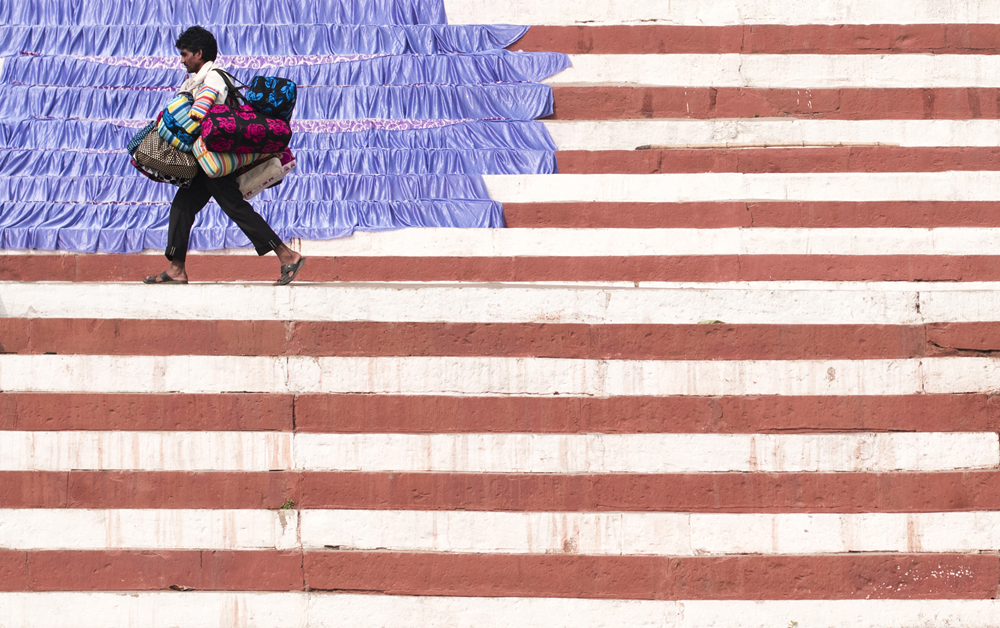
Marcin Ryczek, Emigration, The United States of Earth © Marcin Ryczek
But let us get back to the virtual exhibition itself. Looking at the consecutive compositions exhibited in the collection, the viewer can create diverse interpretations of each photograph, following the concise descriptions that give us a glimpse into the author’s original intention, but which leave space for presumptions and do not suggest the only right way to solve simple, yet though-provoking, metaphors. Also, the fact that one cannot see all the photographs at once, in one room can be both challenging and advantageous – it makes you remember the previous photo in order to make connection with the next one and it focuses your attention on the sole image displayed in a particular moment on the screen of your computer.
Such virtual presentation does not necessarily deprive us from any part of the experience of looking – it just goes beyond the modernist white cube by using technology in the process of creating a display. Still, it enhances the primacy of the sight and of the economic value of the art; the message sent to the viewer by the gallery seems to be: “if you want to see the photograph in a large format, touch it and see the reflexes of light on its glossy surface, you have to buy it”. On the other hand, such virtual display follows the idea of creative commons and operates using the same principles as YouTube or any other virtual gallery on the web. It gambles with a fetishist dimension of the art object and fulfils the concept of democratic art giving access to it to anyone who owns an Internet connection. In the era where everything is published online and where high art is becoming increasingly hermetic such a solution seems fair enough. If you can really see and perceive things, then it does not make any difference if you look at Ryczek’s photographs in a physical or digital form. Of key importance is the message that the artist wants to transmit to us: that the whole of reality is metaphoric and that symbols are a vital part of our culture. To understand it, you just have to look carefully and turn on the “abstract mode” of thinking about the world and its phenomena.
Marcin Ryczek: The Moment, Limited Edition Gallery, limitededition.pl/en/themoment.
Opening: 20.06.2016, 7 pm.
Exhibition on view at the gallery’s website till the end of August
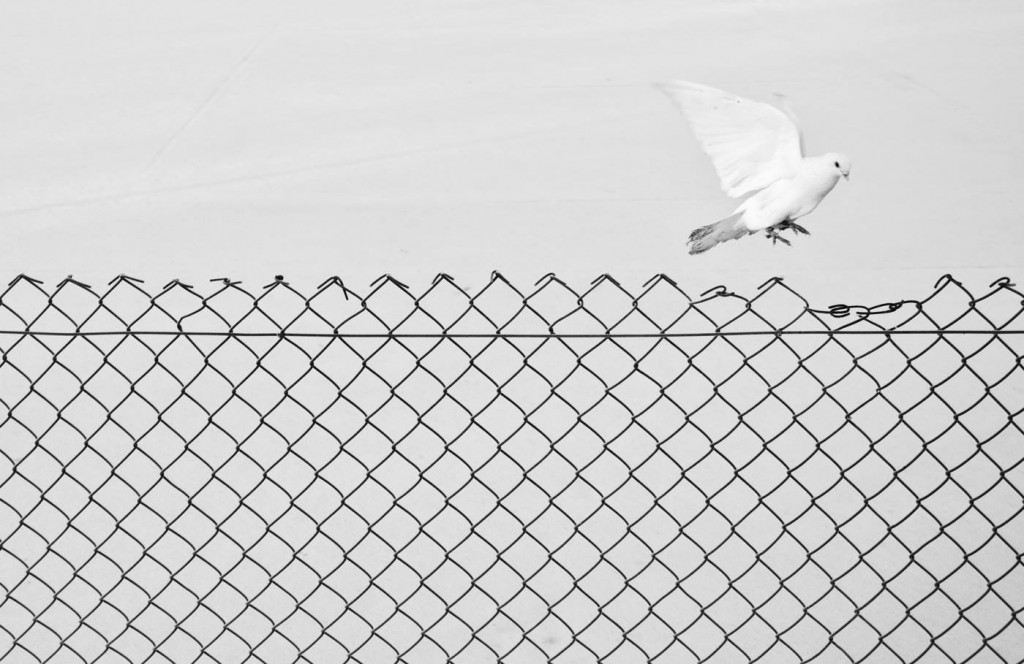
Marcin ryczek, Liberation, © Marcin Ryczek
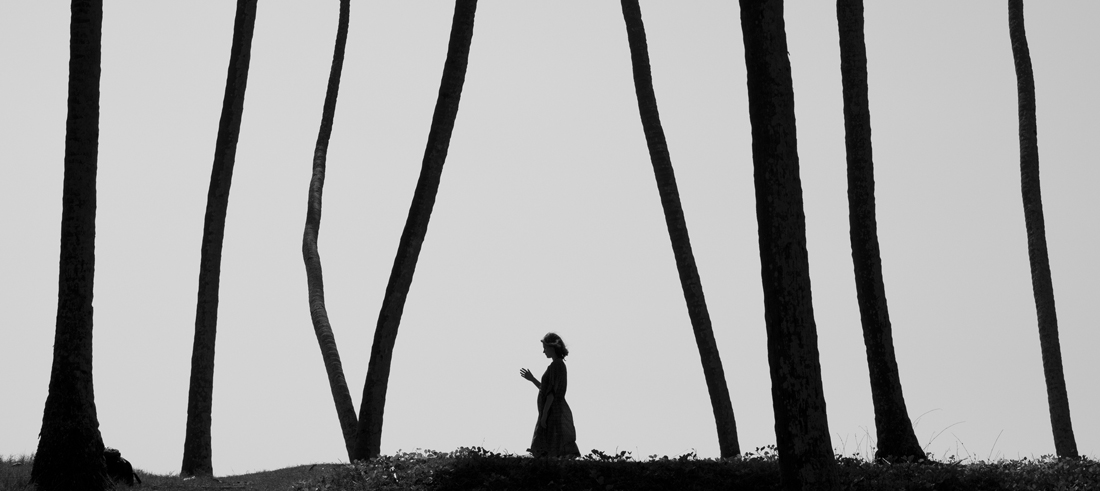
Marcin Ryczek, Forest © Marcin Ryczek
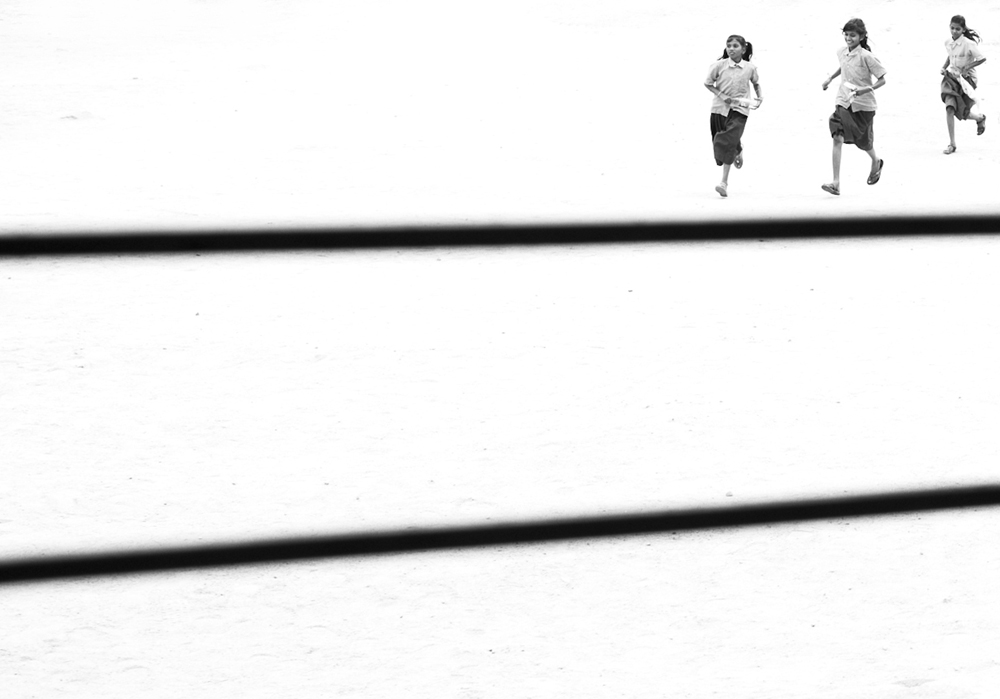
Marcin Ryczek, Running, © Marcin Ryczek








